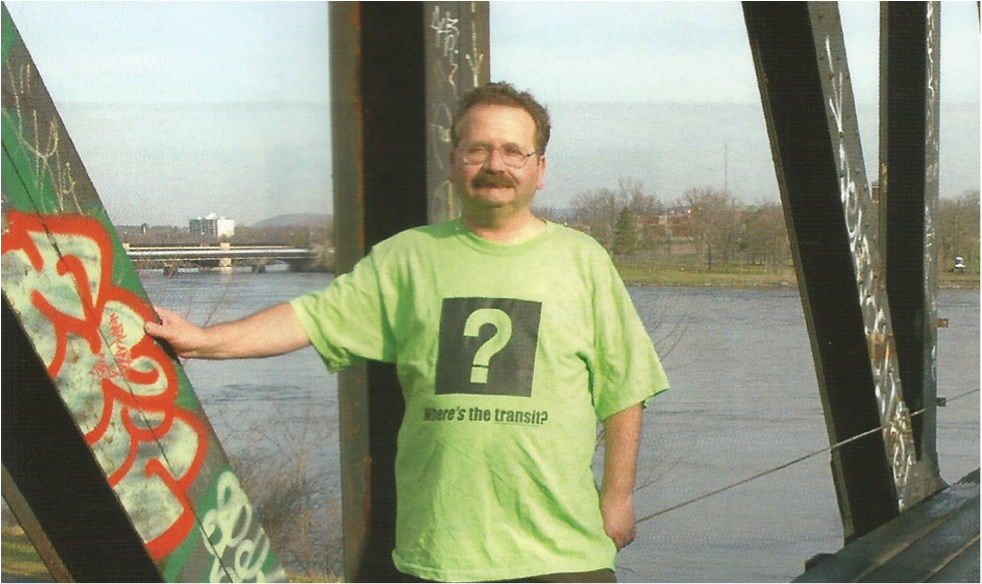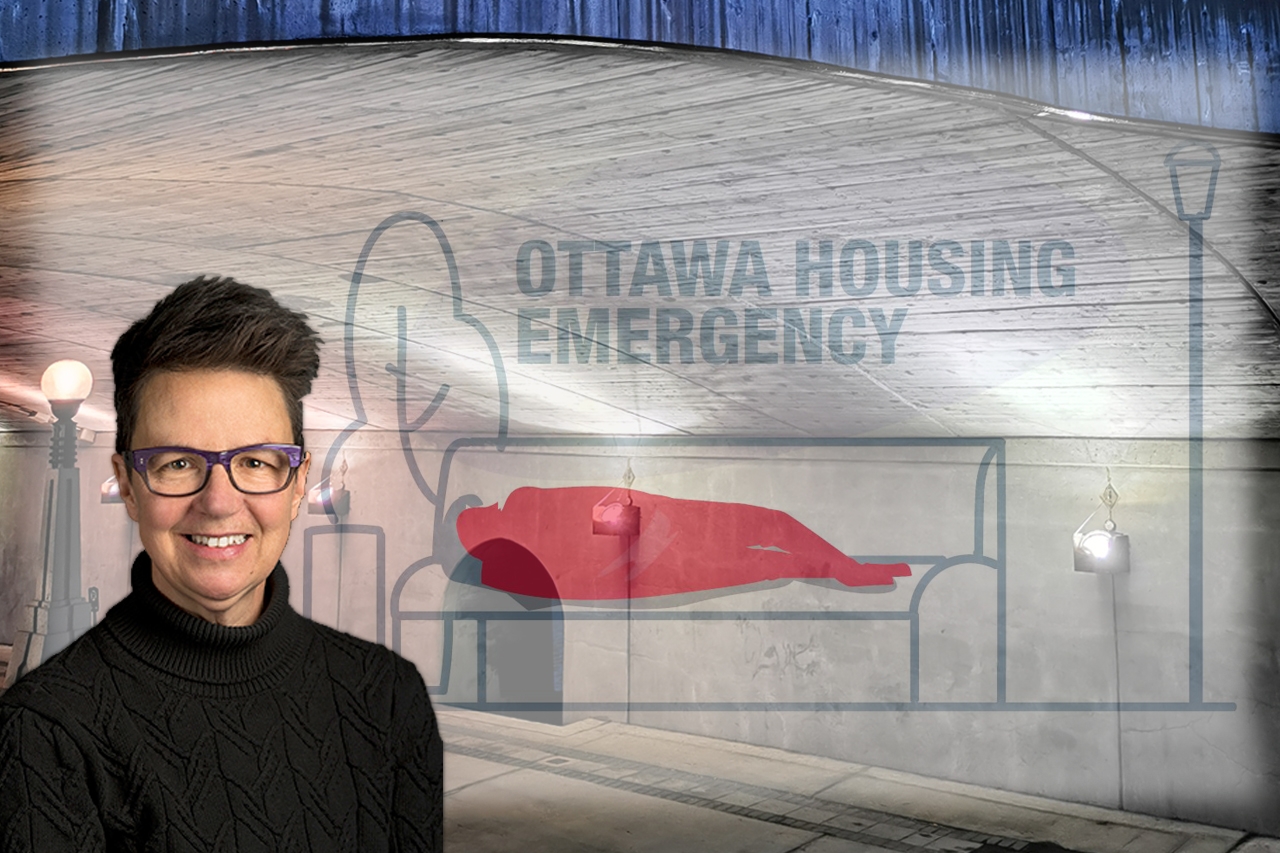
Creating a Community: Cohousing at Terra Firma
On Canada Day, Valerie Gapp baked strawberry and rhubarb muffins.
Valerie, her husband Thomas and their 14-month-old twins Audrey and Alexis joined their neighbours across the street for a potluck brunch. They celebrated two birthdays: Canada’s and Terra Firma’s cohousing community.
Terra Firma residents have lived together for 17 years, and are committed to building sustainable and a well-knit community. Today, Terra Firma remains the first and only cohousing community in Ottawa. It is more resilient than ever.
Knock on the door of 166 Drummond Street, and the door will open to Bob and Marlene Neufeld’s home.
The Neufeld’s residence is a unit of two townhouses joined together by a built-in infill. The infill serves as a common house and as a residence for one of the members.
The Neufeld’s unit may be among the smallest, but it certainly shows the most creativity. The whole house looks like an art exhibition of the couple’s work and passion. The walls are covered with paintings, each hung in a unique way. Numerous crafts and souvenirs rest on the shelves.
The living room extends to the kitchen and has  enough space for two to cook. There is also a door to the shared backyard. Narrow stairs lead to the office, the bedroom and the bathroom on the second floor.
enough space for two to cook. There is also a door to the shared backyard. Narrow stairs lead to the office, the bedroom and the bathroom on the second floor.
Bob and Marlene say they both grew up in villages with strong communities. They wanted their children to have the same experience—a lot of parental figures and many siblings to learn and to play with.
“It was also the idea that we could live more lightly on the planet, using less of the planet’s resources. Instead of having seven lawn mowers, we have one,” Marlene says.
Cohousing, originating in Denmark in the 1960s, reached North America 20 years later. Cohousing is a community combining private, self-sufficient residences with access to a common house where members can spend time together.
Terra Firma’s common house has a kitchen, a large dining space, a bathroom and a guest room for visiting family and friends. There is also a sauna, a laundry room and a storage room. Big boilers provide heating and hot water and there are solar panels on the roof for electricity.
The cohousing members gather in the common house twice a week for dinner which they prepare in turns. The Neufeld’s say it is also a place where members play games, hold movie nights and host different workshops, such as yoga, art, tai chi classes and drumming.
In the joined backyard, Terra Firma residents have built a common garden. The garden embraces ancient trees, fruits, vegetables and flowers.
The residents have also installed bike sheds, bought a hot tub and purchased a trampoline. They built swings and renovated an old shed into a tree house for the kids. “Our children had friends of all ages to interact, to learn, to spend a night in the tent,” says Bob.
What it is Like Living with Your Neighbours?
The Neufeld’s say living with their neighbours is like always having company for a good movie on a cold day and cohousing is being able to have someone to pick up your kids from school or get groceries for you on the way to the store. It also means on some mornings, you can be surprisingly awakened, the couple says.
“Someone can bang on my door and say, ‘Do you have eggs?’” laughs Bob.”It’s a part of being in a village atmosphere.”
Living together as a community is fun, but it is also a challenge, the couple says. There have been conflicts: pets, noise, repairs. Sometimes mediators are even called in.
But in over 17 years, nobody has moved out. All original 10 members are still at Terra Firma, the couple says.
“I think it says something about the nature of our community. Even sometimes, there are some conflicts—that are dealt with in time—we are all here,” Bob says. “So far, everybody eats dinner together.”
Dinner Together: The Batman and the Green Pea Soup with Mint
It is six p.m. and it is time to eat dinner at Terra Firma. The residents slowly fill the common house.
In charge of tonight’s dinner is John Poland. And when it comes to cooking, he means business. John was in the kitchen all afternoon.
The chef orchestrates the menu du jour: “That’s green pea soup with mint. There— Quaker little crackers. These are beets with cucumber sauce. This is rice with tofu, celery and black olives,” Poland says. “Enjoy.”
Tonight’s special guest is Batman. Every community dinner, Ariana Simpson, five, dresses up in her superheroe haute couture. Simpson says she also has costumes of Spiderman, Superman and the Hulk. Her fashion gimmick is to never wear the same costume two dinners in a row.
Tonight’s dinner has a sweet reminiscent air as the residents remember how Terra Firma came alive.
“It is like a marriage. To be successful, it’s something you have to constantly work at,” says Terra Firma resident Steve Fick.
For almost 20 years the residents have been living together, helping and supporting each other. Whether there is a health or money issue, or simply a bad day, there is always someone to share the joys and sorrows of life.
“For example, one of the neighbours had breast cancer. There were people to support her. When another neighbour died recently, she was not alone,” Marlene says.
Fred Simpson says cohousing has changed him and his life. “It’s quite a commitment, but it’s been a learning experience—a life experience.”
Poland agrees. “I like dinners together, and community, community, community. I think what’s missing in the world is community. And some of us don’t have any relatives.”
All Terra Firma residents are especially proud that for almost 20 years, they have lived in peace and friendship.
Ottawa’s Terra Firma is Unique
Terra Firma is a unique cohousing project, says Ronnaye Matthew, director of the Canadian Cohousing Network. Matthew says many communities are trying to build their cohousing infrastructure from scratch.
“Terra Firma is the only Canadian community that has done it as a retrofit—they took existing housing, took down their fences and then added a common house. It’s rare in North America that cohousing is done that way,” Matthew says.
Speaking about cohousing trends in the country, Matthew says more Canadians want to live together.
“I started working in cohousing back in 1996, and there has definitely been an increase in interest,” Matthew says.
Today, the Canadian Cohousing Network counts 11 completed and 17 forming cohousing communities. Ottawa’s Terra Firma is the only completed project in Ontario.
Matthew says as the cohousing movement grows, so are the government regulations. The cohousing market is intricate, forcing communities to seek professional cohousing consultants that not all provinces have.
“The problem is it is very difficult to do, and it’s gotten more difficult to do,” Matthew says. “In 1996, it was actually easier to create cohousing than it is today, unfortunately.”
Capital Ward councillor David Chernushenko says he knows the challenges cohousing projects can face in Ottawa. In the beginning, Chernushenko and his wife were part of Terra Firma project. After four years of trying to start the project, he says his family bought a private house.
Chernushenko says his group had a hard time finding land located in the centre of the town, was zoned appropriately and land all the members could agree upon and afford.
In Ottawa, Chernushenko says no policies prevent people from creating cohousing communities. But not all people are ready to give up their individual residency and embrace the idea of sharing, he says.
“We are all raised with the idea of ‘What is mine, is mine,’” says Chernushenko. “This idea of a formal sharing arrangement and joint decision making—it’s a bit of an unusual big step for a majority population to take.”
***
The Gapp family is impressed upon their return from the Terra Firma brunch. Before moving into their Old Ottawa South neighbourhood, Valerie Gapp says they lived all across Canada and in California. Gapp says she liked the idea that her family did not have to travel far from home to enjoy good company.
“It’s fantastic! I think this is one of the friendliest neighbourhoods we have ever lived in,” says Gapp. “It’s like another family.”








